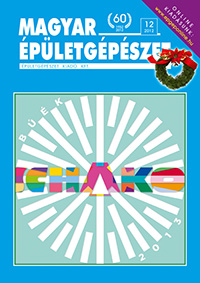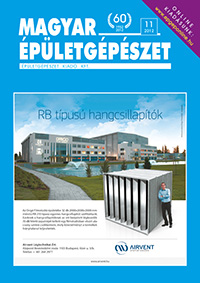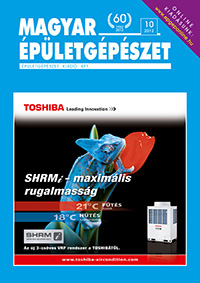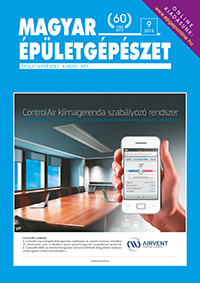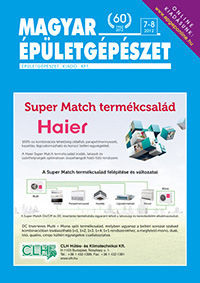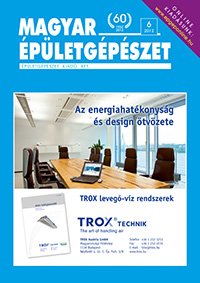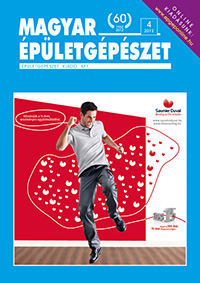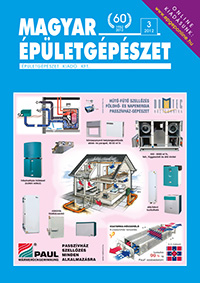Lapszámok
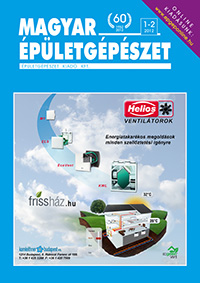
2012 1-2. szám
- Mészáros Ferenc - Dr. Barna Lajos PhD:
Születésnapi köszöntő - Baumann Mihály - Dr. Fülöp László PhD - Budulski László - Schneider Roland:
Hővisszanyerős lakásszellőző vizsgálata talajhő-hasznosítással - Dr. Magyar Zoltán PhD:
Termikus műemberek alkalmazása hőkomfort mérésekhez - Eördöghné Dr. Miklós Mária:
Víz és vízszolgáltatás – háttéradatok a vízellátás tervezéséhez - Kabele, Karel - Dvořáková, Pavla:
Modelling and Simulation of Radiant Heating and Cooling Systems - Kiss László - Fonó György:
Hulladékhő hasznosítása hőszivattyúval - Kucsera Mihály:
Passzívpanelház energetikai korszerűsítésének gépészeti koncepciója - ENERGIAKLUB Szakpolitikai Intézet:
A hatékonyság nem csak megtakarítás: bevétel is lehet - Nagy János:
Energiatakarékos világítási lehetőségek - Engel György:
Épületek légtömörségi hibáinak, fűtési és klímarendszerek veszteségeinek feltárása - Kékesi István:
AutoCAD MEP 2012 – az épületgépészeti célszoftver - Schiedel Kéménygyár Kft.:
A kéménytechnika alapkövetelménye a biztonságos üzemelés - EXPO-INOX Hungary Kft.:
Módosult az MSZ 845 jelzetű nemzeti kéményszabvány - Airvent Zrt.:
Svédországi kitekintő - Erdélyi Barna - Kiss László:
Thermal Response Test – Földhőszondás hőszivattyús rendszerek földtanilag megalapozott tervezése
Hozzászólások
Modelling and Simulation of Radiant Heating and Cooling Systems
Még nem érkezett hozzászólás!
Kabele, Karel - Dvořáková, Pavla
Modelling and Simulation of Radiant Heating and Cooling Systems
Számos tényező indokolja, hogy a beágyazott kapilláris hálóként elhelyezett sugárzó fűtési/hűtési megoldások a figyelem középpontjába kerültekKözép-Európában. Az energiafelhasználás csökkentésére irányuló törekvésekmegkövetelik az aktív hűtési rendszerek meglétét. A cikk arra a kérdésre keresi a választ, hogy a cseh szabványoknak megfelelő, modern épületben elhelyezett integrált fűtési/hűtési sugárzó rendszer energiahatékonyság szempontjából alkalmazható-e a csehországi klíma esetében. A szerzők szimuláció segítségével elemezték az ilyen rendszerrel felszerelt helyiség viselkedését és a benne kialakuló hőérzeti komfortot egy éves időtartamra. A szimulációval nem találtak problémát a fűtés területén, azonban a hűtésnél azt tapasztalták, hogy a rendszer hűtési teljesítménye nem tudja minden esetben a hűtési igényt fedezni.
Forrás: The REHVA European HVAC Journal, 2011/6
The typical need for climate conditions of Central Europe (Czech Republic) is space heating during heating period (approx 230 days a year). Up till recent days there were no active cooling systems considered for a traditional building. Due to low internal gains, high thermal inertia and optimised glazing ratio such a building could be operated without any active cooling. For up-to-date buildings (especially office buildings) with high internal gains, high galzing ratio, low mass and well-insulated walls (U value less than 0.3W/m2K) and windows (U value less than 1.8 W/m2K) an active cooling system seems to be essential whenever we want to follow the comfort requirements during summer period. Numerous of these buildings demonstrate the cooling load to be higher or much more higher than the heating load.
Traditional approach to the technical solution of a heating/cooling system is to design two independent systems – radiator heating and split units cooling. One of the latest technical solutions, which could be considered as a sustainable one, is an integrated radiant heating/cooling system.
